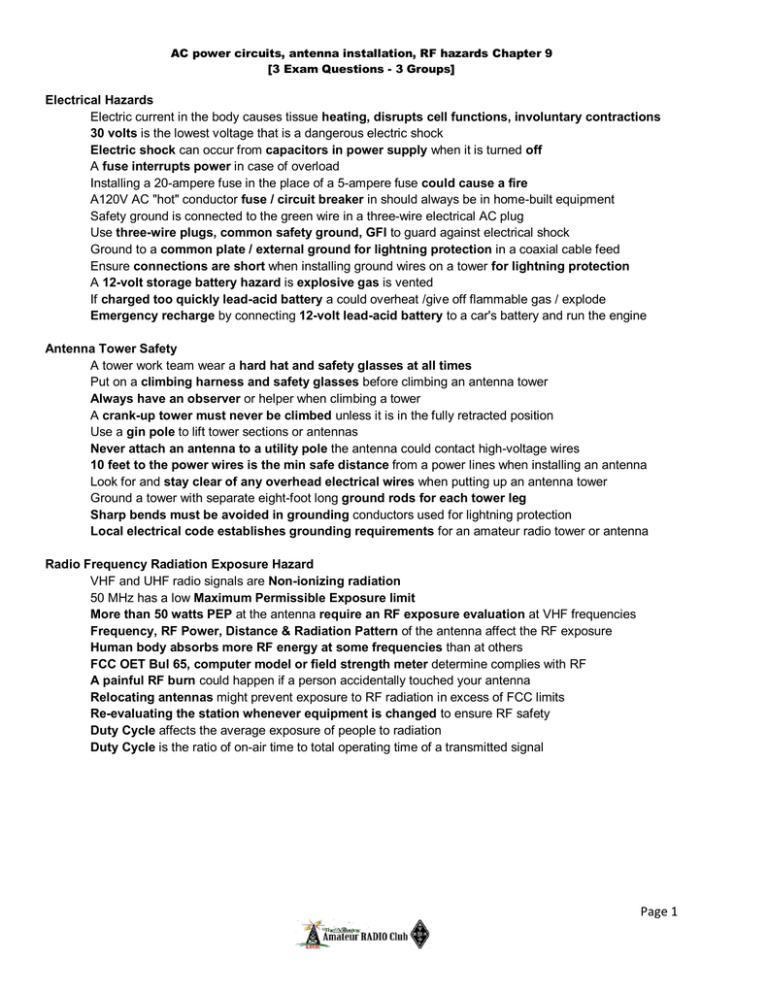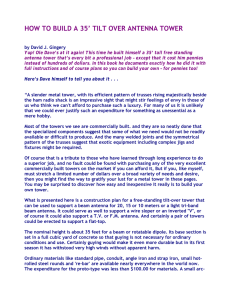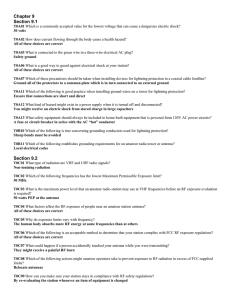Page 1 - K4VRC
advertisement

AC power circuits, antenna installation, RF hazards Chapter 9 [3 Exam Questions - 3 Groups] Electrical Hazards Electric current in the body causes tissue heating, disrupts cell functions, involuntary contractions 30 volts is the lowest voltage that is a dangerous electric shock Electric shock can occur from capacitors in power supply when it is turned off A fuse interrupts power in case of overload Installing a 20-ampere fuse in the place of a 5-ampere fuse could cause a fire A120V AC "hot" conductor fuse / circuit breaker in should always be in home-built equipment Safety ground is connected to the green wire in a three-wire electrical AC plug Use three-wire plugs, common safety ground, GFI to guard against electrical shock Ground to a common plate / external ground for lightning protection in a coaxial cable feed Ensure connections are short when installing ground wires on a tower for lightning protection A 12-volt storage battery hazard is explosive gas is vented If charged too quickly lead-acid battery a could overheat /give off flammable gas / explode Emergency recharge by connecting 12-volt lead-acid battery to a car's battery and run the engine Antenna Tower Safety A tower work team wear a hard hat and safety glasses at all times Put on a climbing harness and safety glasses before climbing an antenna tower Always have an observer or helper when climbing a tower A crank-up tower must never be climbed unless it is in the fully retracted position Use a gin pole to lift tower sections or antennas Never attach an antenna to a utility pole the antenna could contact high-voltage wires 10 feet to the power wires is the min safe distance from a power lines when installing an antenna Look for and stay clear of any overhead electrical wires when putting up an antenna tower Ground a tower with separate eight-foot long ground rods for each tower leg Sharp bends must be avoided in grounding conductors used for lightning protection Local electrical code establishes grounding requirements for an amateur radio tower or antenna Radio Frequency Radiation Exposure Hazard VHF and UHF radio signals are Non-ionizing radiation 50 MHz has a low Maximum Permissible Exposure limit More than 50 watts PEP at the antenna require an RF exposure evaluation at VHF frequencies Frequency, RF Power, Distance & Radiation Pattern of the antenna affect the RF exposure Human body absorbs more RF energy at some frequencies than at others FCC OET Bul 65, computer model or field strength meter determine complies with RF A painful RF burn could happen if a person accidentally touched your antenna Relocating antennas might prevent exposure to RF radiation in excess of FCC limits Re-evaluating the station whenever equipment is changed to ensure RF safety Duty Cycle affects the average exposure of people to radiation Duty Cycle is the ratio of on-air time to total operating time of a transmitted signal Page 1




